NVIDIA GeForce RTX 5070 Graphics Card Review
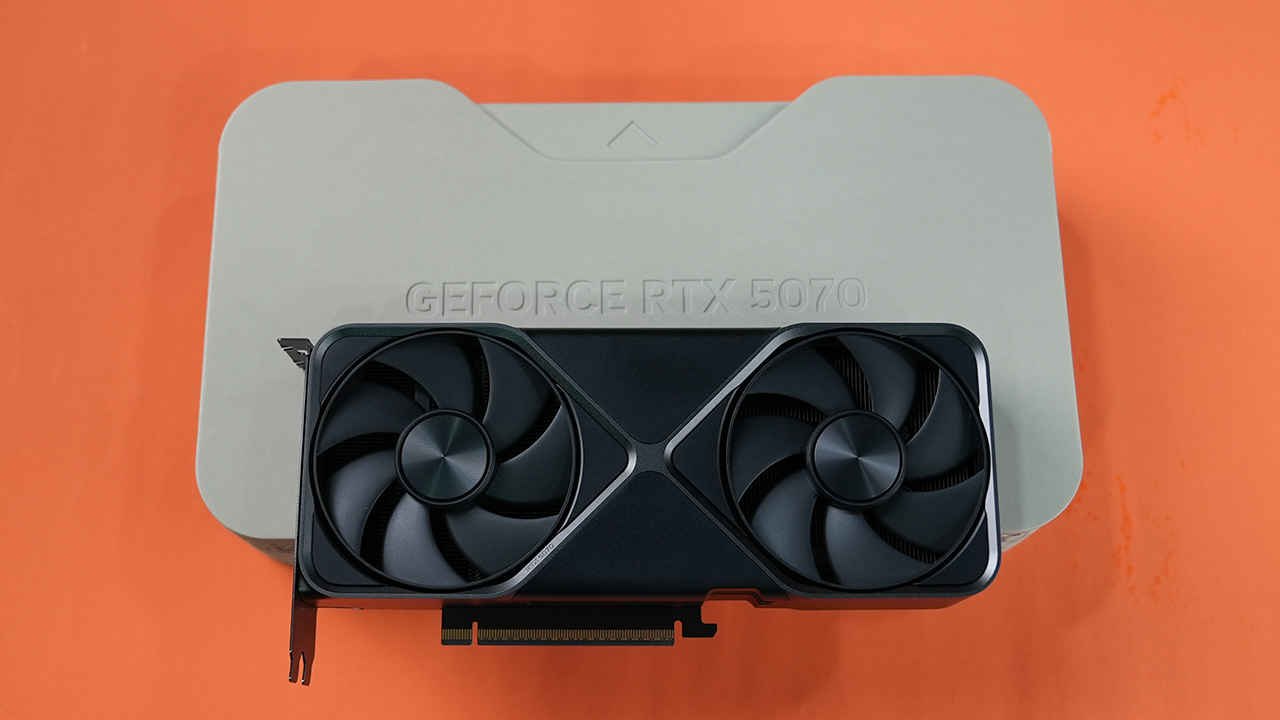
- Improved Power Connector
- 250W Max power draw is great for most configurations
- 192-bit interface for 70-class card
- OC capabilities artificially gated
The NVIDIA RTX 5070 is a decent upgrade for folks coming in from 2-3 generations back. With an MSRP of INR 60,000, the NVIDIA RTX 5070 is a great buy for folks who might be on an RTX 2070 or 2080 and to a certain extent, even the folks who’re currently running an RTX 3080. Just the additional frames produced by DLSS 4 Multi Frame Generation is enough to make this a great card for folks who are into casual gaming and even those into eSports. From a purely raster performance perspective, we’re still looking at incremental performance. And if the partner cards are nowhere near MSRP then NVIDIA will have a tough time selling the RTX 5070 and the 5070 Ti, especially considering the recent announcement by AMD for the RX 9070 XT and RX 9070.
With the launch of the RTX 5090, 5080 and 5070 Ti out of the way, NVIDIA has opened the floodgates for the more pragmatic gamers with the launch of the NVIDIA GeForce RTX 5070 graphics card. Why pragmatic? The 70-class graphics cards offer enough performance to comfortably drive high-resolution displays and allow for gamers to experience the best that NVIDIA has to offer without necessarily breaking the bank. This was the experience that the 60-class cards were known for until a few generations ago but has now crept into the 70-class.
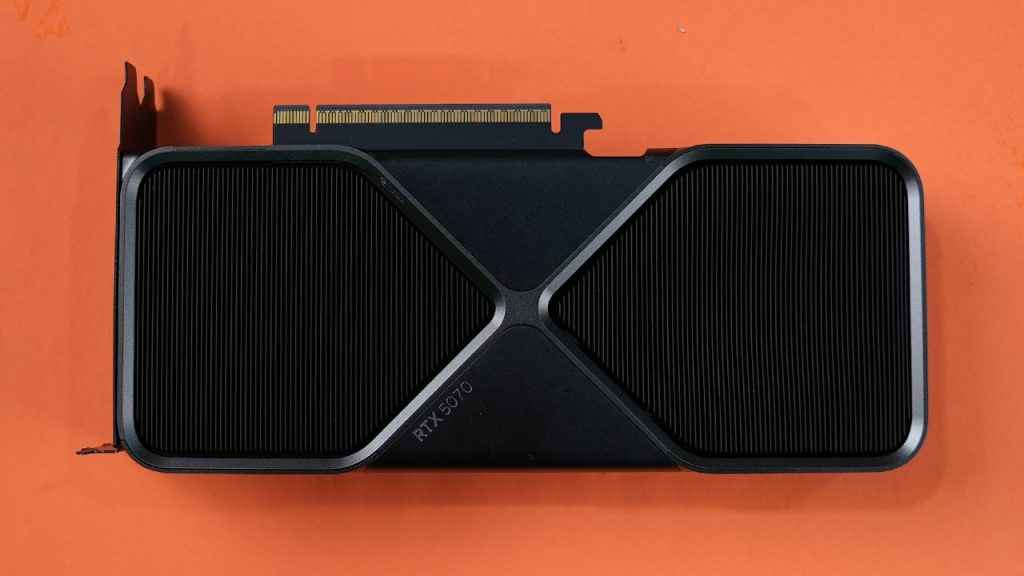
All that aside, the 70-class cards are what gamers tend to use for 2-3 generations before even considering an upgrade, which means that GPU manufacturers such as NVIDIA and AMD get quite competitive in this space. This is evident from what we saw with the AMD Radeon RX 9070 XT announcement, wherein AMD has priced the Radeon RX 9070 XT and RX 9070 in such a manner so as to completely eliminate the NVIDIA RTX 5070 Ti and 5070 as viable options for an upgrade. That’s of course, only possible if the competing cards can beat the performance of the NVIDIA cards. Things will only become clearer once the reviews are out, so until then, let’s have a look at the NVIDIA GeForce RTX 5070 graphics card today.
NVIDIA GeForce RTX 5070 Specifications
The RTX 5070, built on the NVIDIA Blackwell architecture, features 48 active Streaming Multiprocessors which in turn host 6144 CUDA cores. They’re aided by 80 ROPs and 192 Texture Units. The official specifications don’t list the ROP and TMU count but the unit we’ve received has matched up to the claimed performance metrics so we can safely say that our unit was flawless. The base clock of the GPU is 2325 MHz and it can hit a boost clock of 2512 MHz.
| NVIDIA RTX 5070 Super Specifications | ||||
| GPU | RTX 5090 | RTX 5080 | RTX 5070 TI | RTX 5070 |
| Graphics Processing Cluster | 11 | 7 | 6 | 5 |
| Texture Processing Cluster | 85 | 42 | 35 | 24 |
| Streaming Multiprocessors | 170 | 84 | 70 | 48 |
| CUDA Cores | 21760 | 10752 | 8960 | 6144 |
| Tensor Cores | 680 | 336 | 280 | 192 |
| RT Cores | 170 | 84 | 70 | 48 |
| Texture Units | 680 | 336 | 280 | 192 |
| ROP Units | 176 | 128 | 128 | 80 |
| Base Clock | 2017 MHz | 2295 MHz | 2300 MHz | 2325 MHz |
| Boost Clock | 2407 MHz | 2617 MHz | 2452 MHz | 2512 MHz |
| Memory Clock | 1750 MHz | 1875 MHz | 1750 MHz | 1750 MHz |
| Memory Data Rate | 28 GBps | 30 GBps | 28 GBps | 28 Gbps |
| L1 Cache per SM / Array | 128 KB | 128 KB | 128 KB | 128 KB |
| L2 Cache Size | 96 MB | 64 MB | 64 MB | 48 MB |
| Total Video Memory | 32 GB | 16 GB | 16 GB | 12 GB |
| Video Memory Type | GDDR7 | GDDR7 | GDDR7 | GDDR7 |
| Memory Interface | 512-bit | 256-bit | 256-bit | 192-bit |
| Total Memory Bandwidth | 1.79 TB/s | 960 GB/s | 896 GB/s | 672 GB/s |
| Process Node | TSMC 4N | TSMC 4N | TSMC 4N | TSMC 4N |
| Total Graphics Power | 575 W | 360 W | 300 W | 250 W |
As for folks wondering about the ray-tracing and AI capabilities, the RTX 5070 features 48 RT Cores and 192 Tensor Cores which does differentiate the card from the 5070 Ti by a decent margin. So we wouldn’t be surprised if NVIDIA launches a couple of Super cards to fill in the performance gaps. Lastly, the card comes with 12 GB of GDDR7 video memory attached to a 192-bit interface reaching a maximum of 28 Gbps or 672 GB/s of effective bandwidth. Again, no surprises if we see an RTX 5070 Super soon.
NVIDIA RTX 5070 Performance
We have featured some of the older series cards along with most of the RTX 40 series cards including the Super cards. A few older series cards were also thrown into the mix to see how good the cards perform against the competition. Like always, we have a section for synthetic benchmarks as well as gaming benchmarks, with plenty of charts to showcase differences. Coming to the rig, this is what we’re running our benchmarks on.
Processor – AMD Ryzen 7 9800X3D
CPU-Cooler – Noctua NH-D15
RAM – 2x 32 GB Kingston FURY Beast 6000 MT/s
SSD – Kingston KC3000 2TB
PSU – Cooler Master V1200
3DMark
3DMark is a popular benchmarking tool for graphics cards and gaming systems. It provides a comprehensive suite of tests that measure various aspects of a GPU’s performance. 3DMark includes several benchmarks, such as Time Spy, Steel Nomad, Speed Way, and Fire Strike. Time Spy is a DirectX 12 benchmark that tests the performance of a GPU and CPU in a variety of graphically demanding scenes. Steel Nomad, successor to Time Spy, is a DirectX 12 benchmark that focuses on real-time ray tracing and other advanced graphics features. Then there’s Speed Way, a DirectX 12 benchmark designed to test the performance of a GPU and CPU in a high-speed racing game environment. And for legacy benchmarks, we have Fire Strike which is a DirectX 11 benchmark that tests the performance of a GPU and CPU in a variety of gaming scenes.
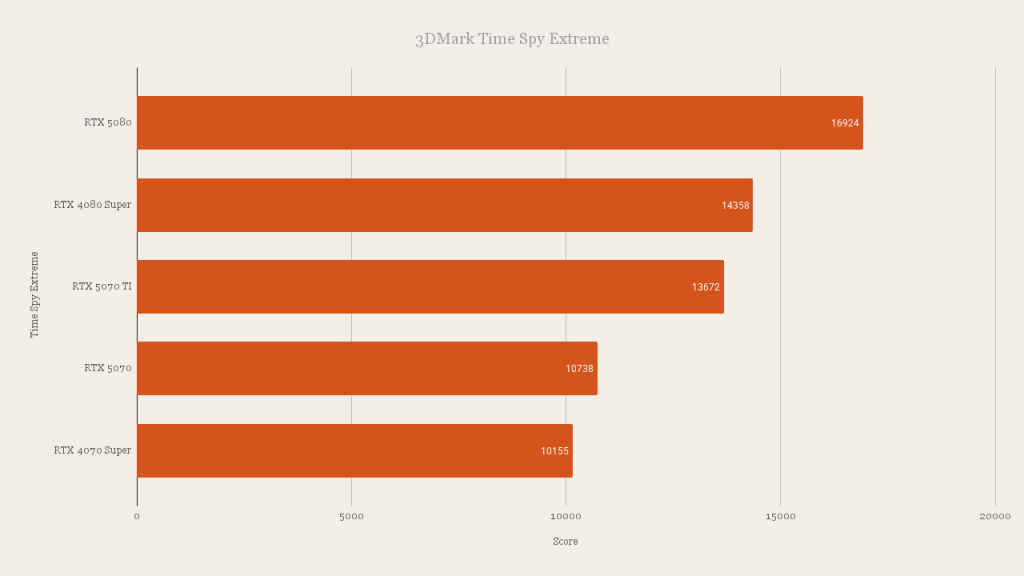
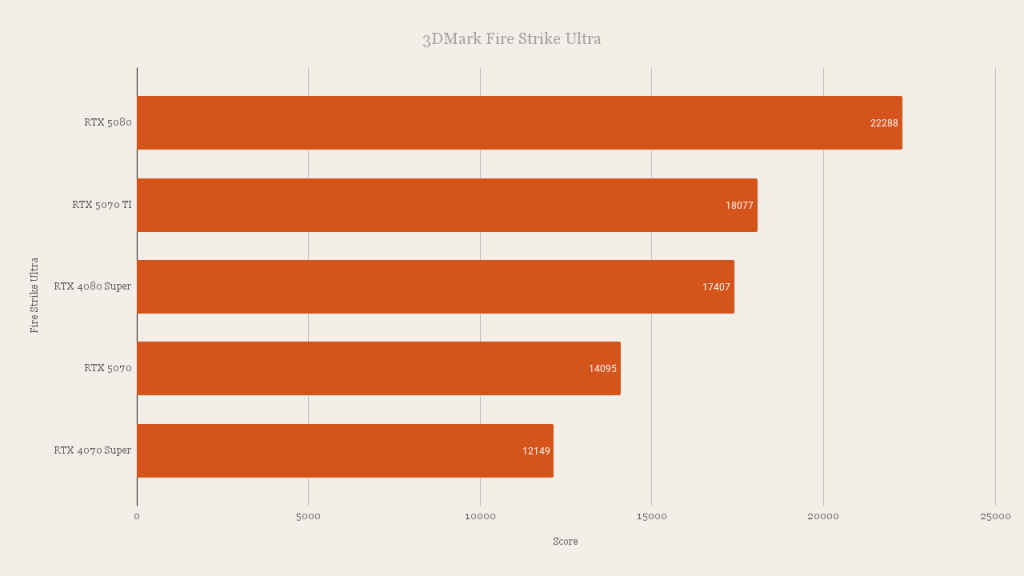
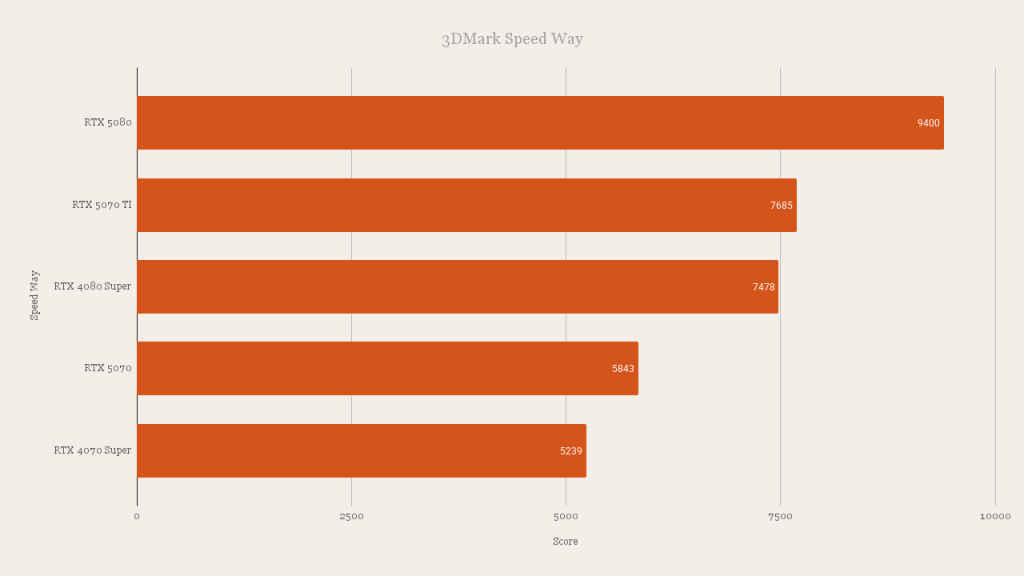
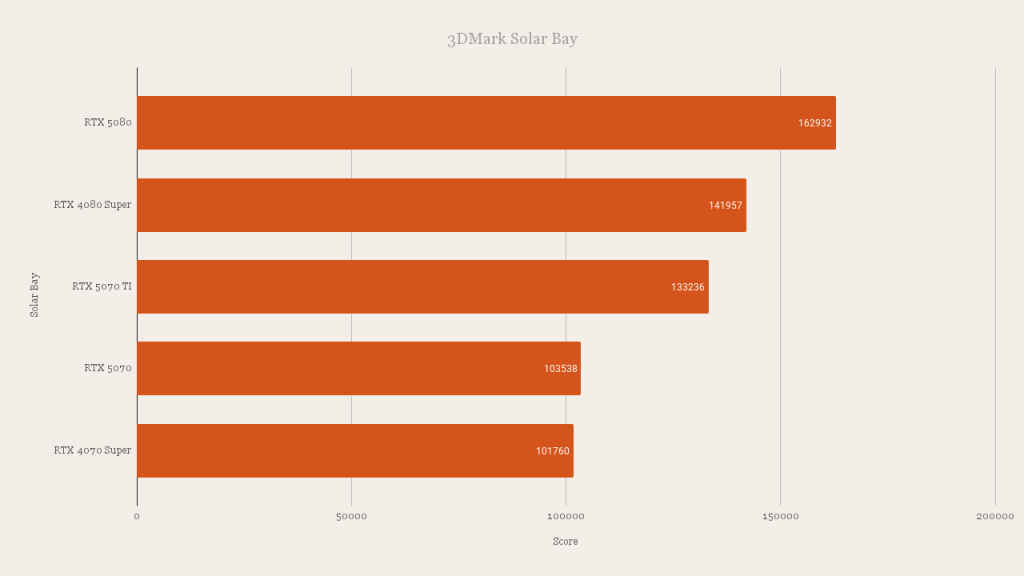
Ray Tracing
3DMark Port Royale is a synthetic benchmark that uses a real-time ray tracing scene to simulate the reflections, shadows, and other visual effects that are possible with ray tracing technology. Port Royale is a demanding benchmark that can be used to compare the performance of all current graphics cards with real-time hardware-accelerated ray-tracing.
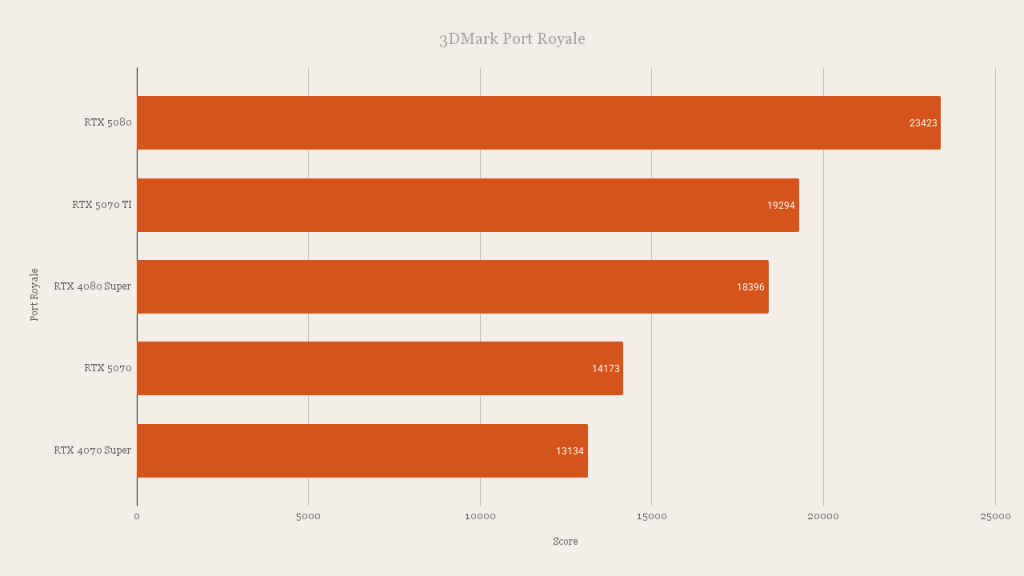
Blender
Blender is a great 3D modeling and animation software that’s open-source and it is the preferred tool for folks wanting to get their hands dirty with 3D modeling. We used version 4.3. There are three scenes in Blender – monster, junkroom and classroom – with varying design complexities that provide an array of different textures that can tax the GPU properly.
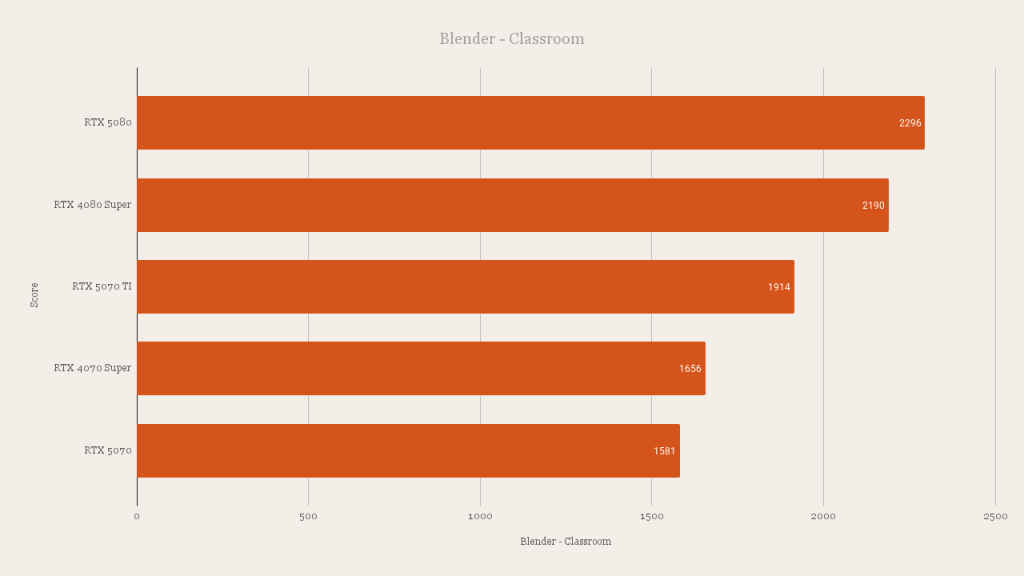
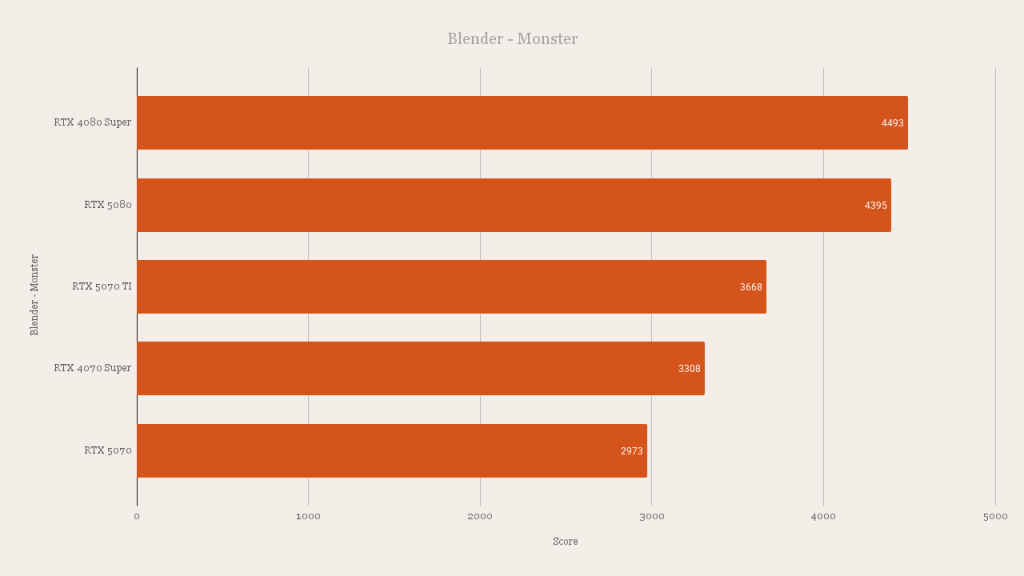
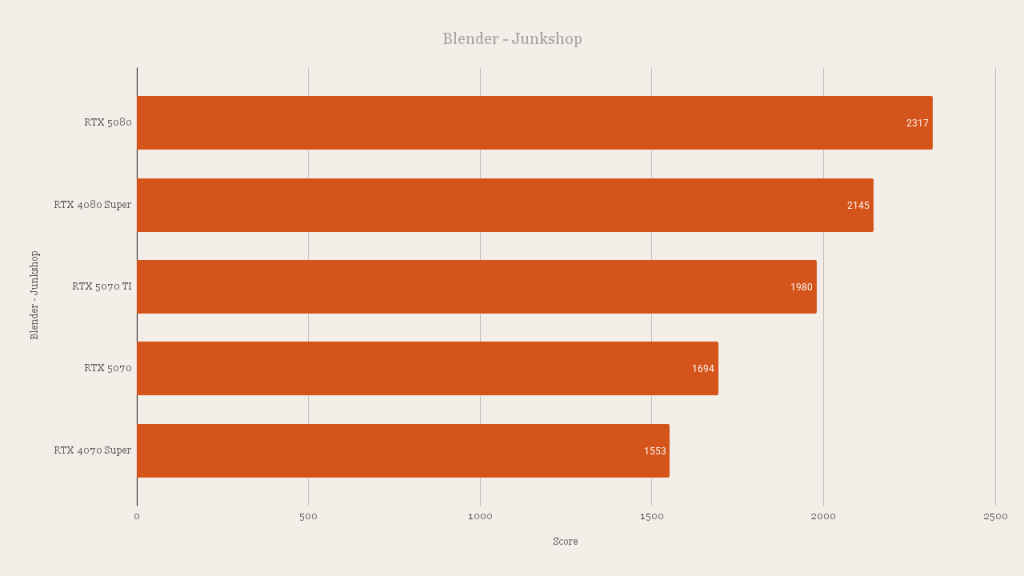
OpenCL Rendering
This benchmark utilises OpenCL to generate photorealistic results by strictly adhering to the physics of light, a process known as physically-based rendering. Rendering progress is gauged by the number of samples calculated, which can be visualised as “light particles” that have interacted with the scene and reached the camera’s sensor. As a physically-based renderer, the results closely reflect how GPUs are used in industrial rendering applications.
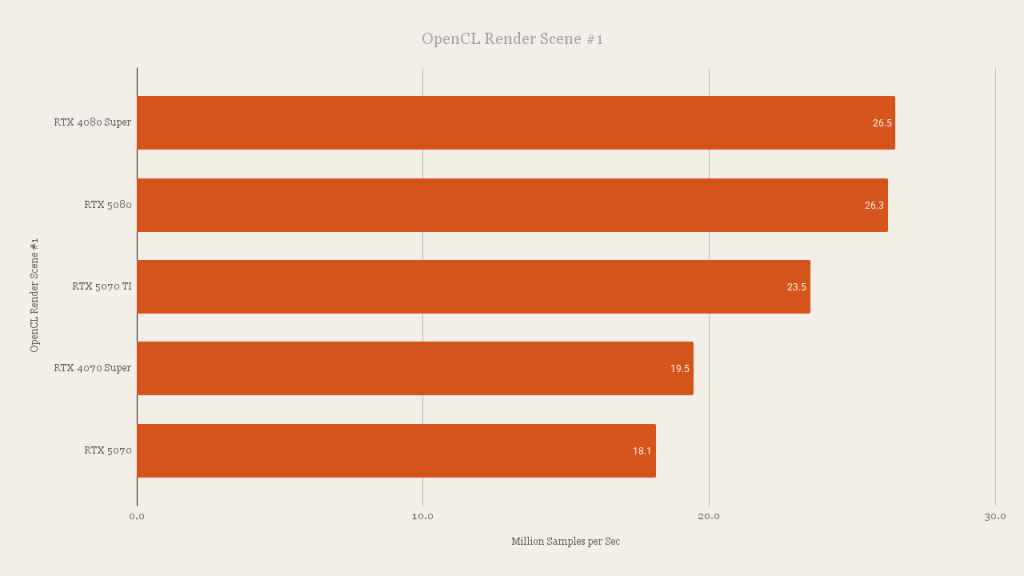
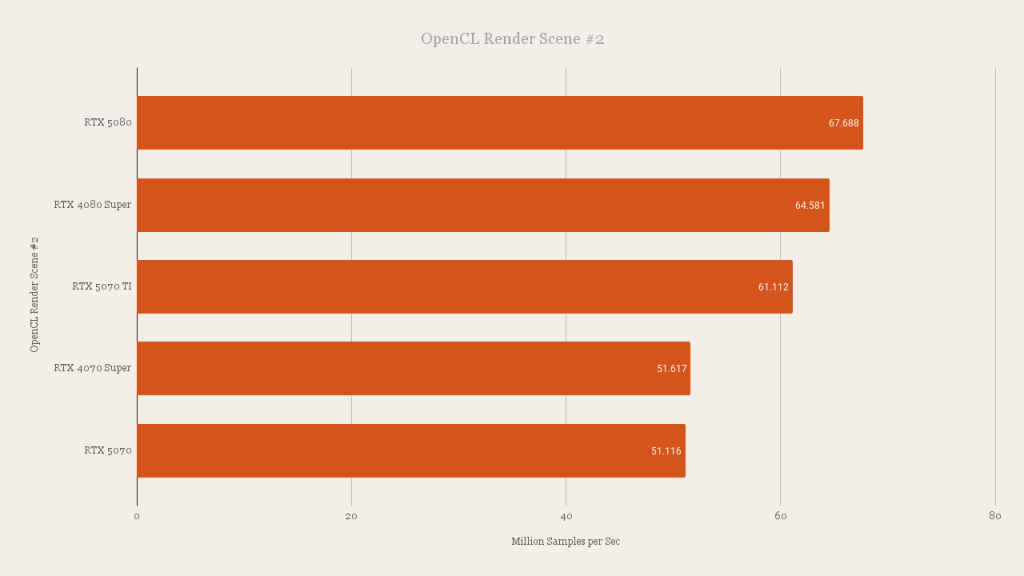
API Performance
Basemark GPU is a nice benchmark to compare the performance of different graphics APIs between cards. We can use the same textures with OpenGL, Vulkan and DirectX 12 to see if the graphics card excels at any particular API more than the rest or if the performance is consistent across the board.
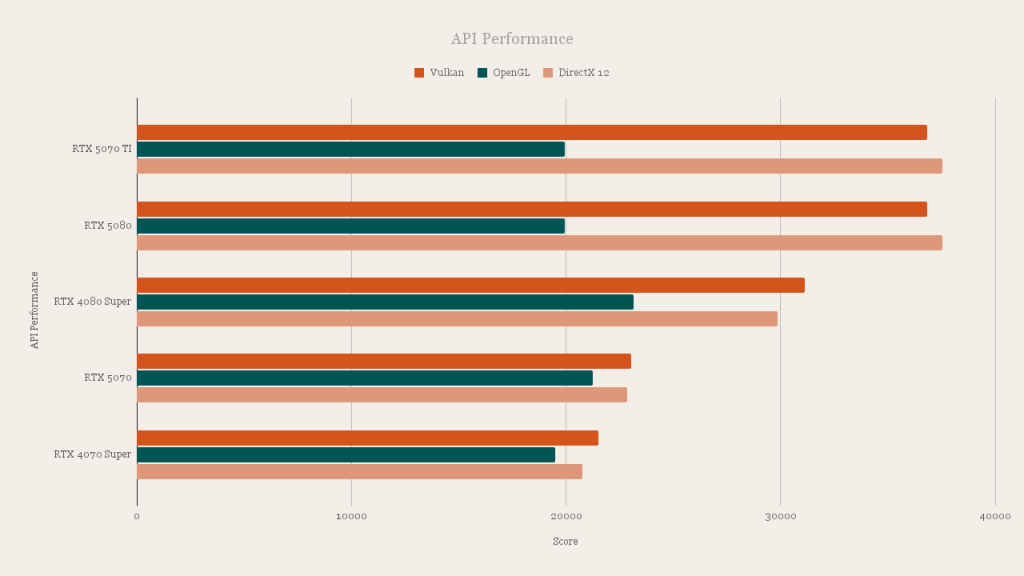
Procyon AI Computer Vision
The Procyon AI Computer Vision Benchmark evaluates the performance of AI inference engines on your hardware using a variety of machine-vision tasks and popular neural networks. The benchmark scores reflect the performance of on-device inferencing operations compared to the same operations run on the CPU or GPU. This allows you to measure the performance of AI accelerators and compare different AI inference engines from various vendors.
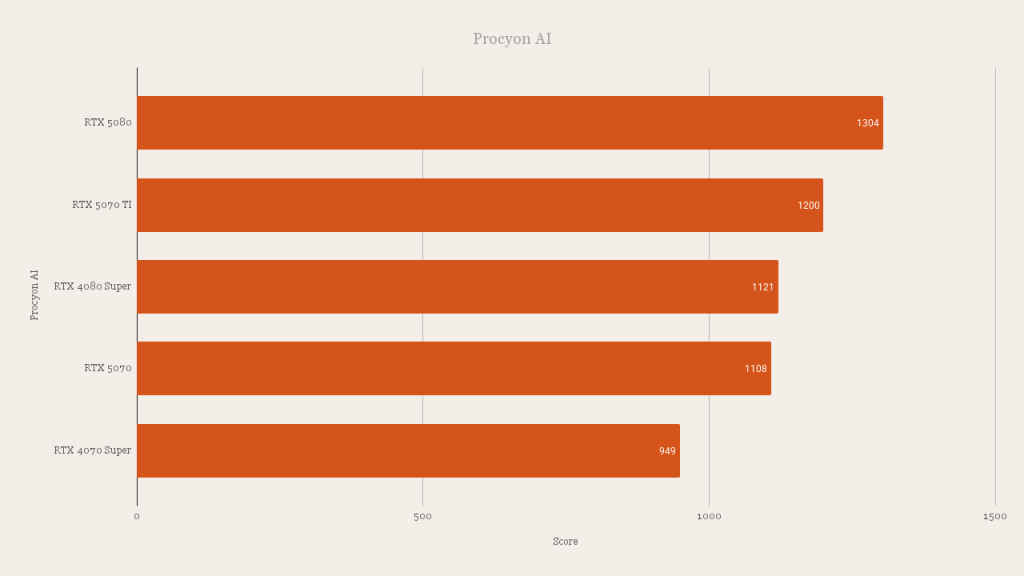
NVIDIA GeForce RTX 5070 Gaming Benchmarks
Assassin’s Creed Mirage
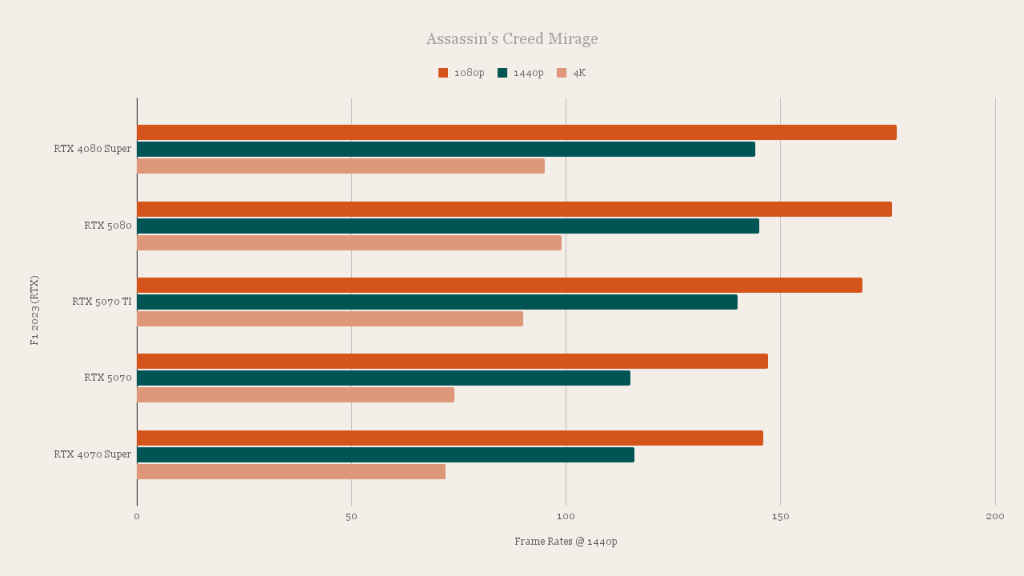
Hogwarts Legacy
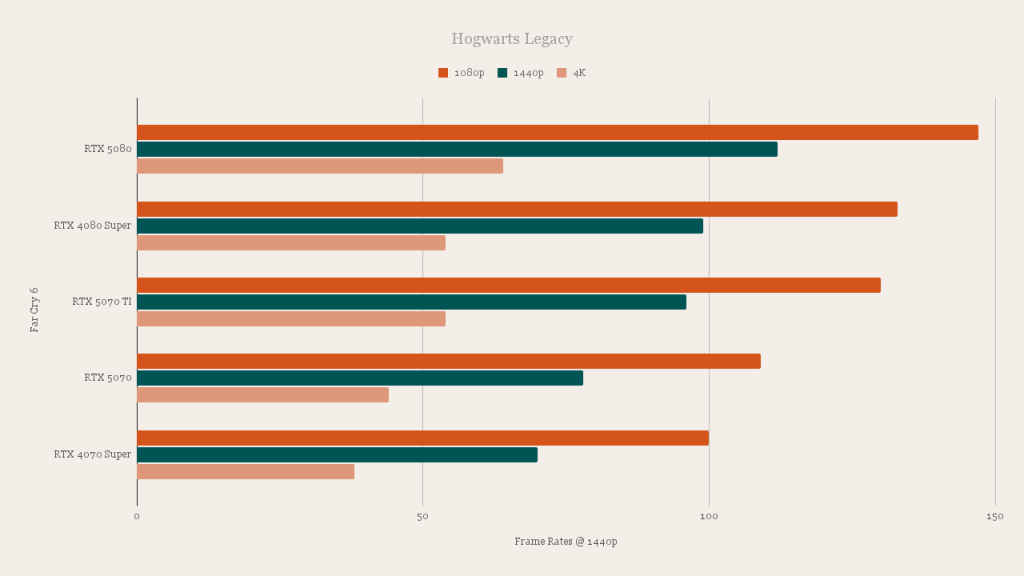
Cyberpunk 2077
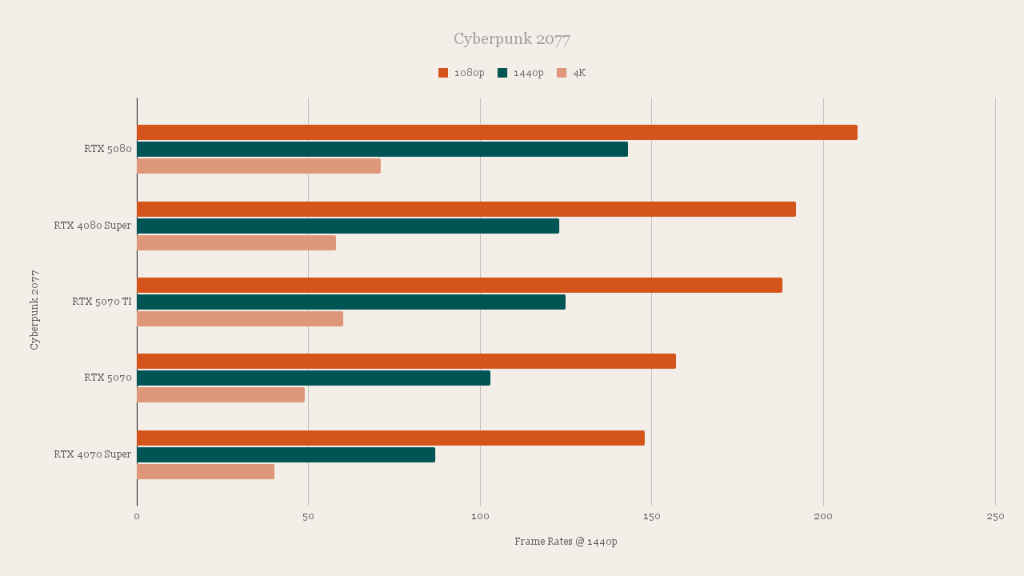
The Witcher 3
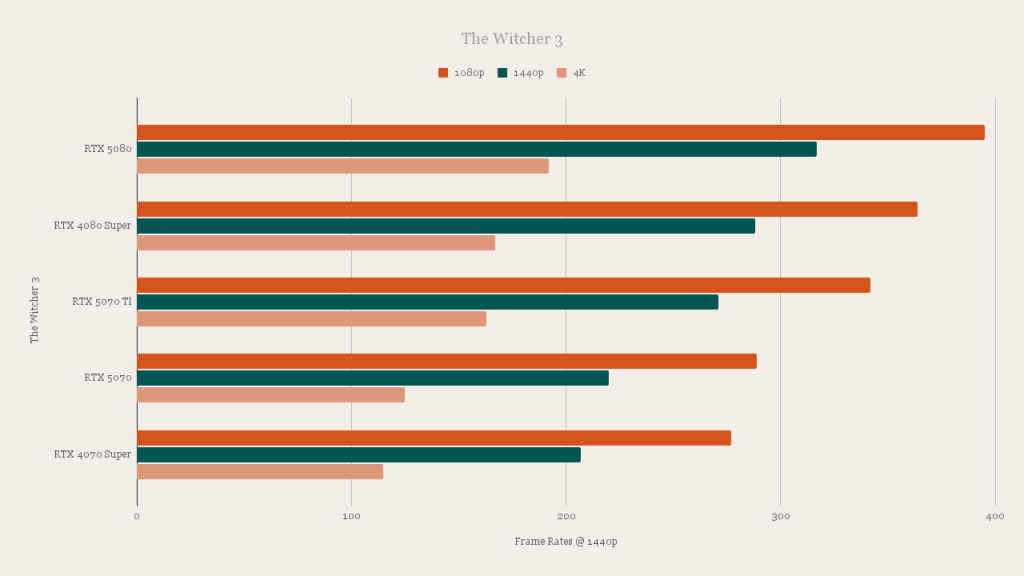
F1 24
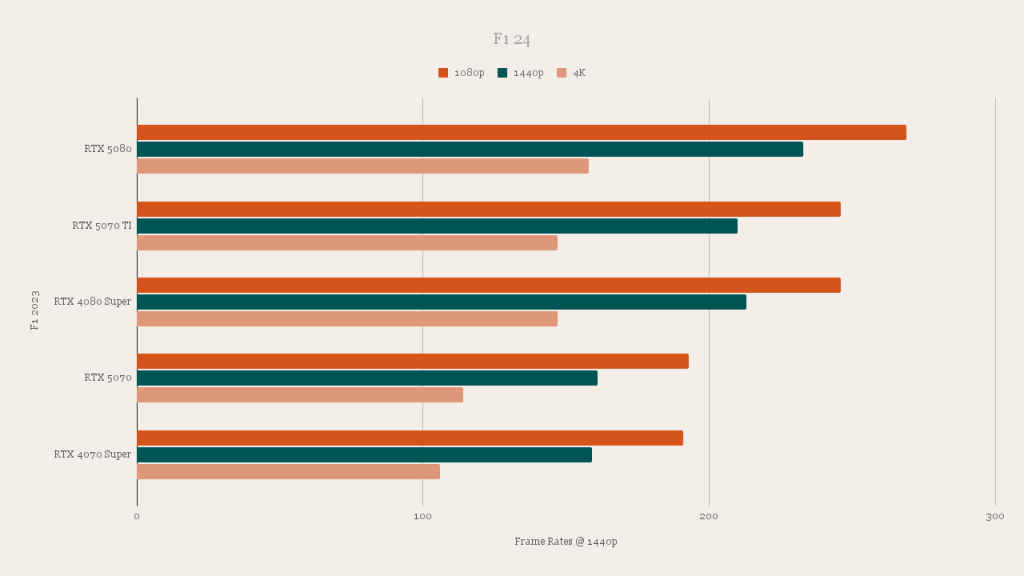
Power Consumption and Thermals
Being a Founders Edition card, the NVIDIA GeForce RTX 5070 that we received has a very tame aesthetic, and it has none of the RGB madness that partner cards tend to have. So the idle power draw goes down to 7-8 Watts when the fans are inactive. However, when under load, the total power draw can easily hit the 250 W max limit. With mid-tier cards, NVIDIA seems to hard lock the power draw to the maximum advertised limits. This is great for the average consumer since they’re unlikely to be surprised by runaway power bills. However, for the folks who like to overclock and tinker, having a hard power limit is an absolute downer. This means that even if the GPU had the potential to give more performance, the hard power limit will eliminate all that potential.
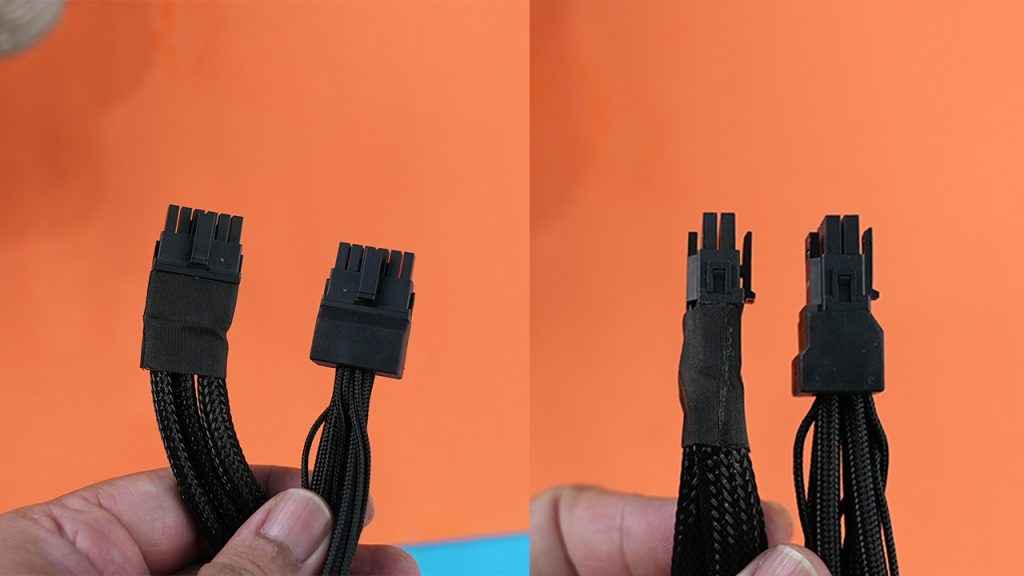
One good thing about the RTX 5070 is that the power connector provided with the graphics card has a hard and chunky grip for users to properly attach the connector onto the graphics card. NVIDIA has been getting some flak for their 12VHPWR connector that has not been mating properly. With this change, hopefully, we’ll see fewer instances of burnt connectors.
Overclocking the NVIDIA RTX 5070
Despite the fact that the power limits have been hard-locked, the RTX 5070 still has a decent amount of headroom for overclocking. We were able to extract about 7.65 per cent more performance from the RTX 5070 with a few simple tweaks to the memory and core clocks. While this was primarily done on a synthetic benchmark, the impact might not be as profound when you consider real-world gaming.
Verdict
The NVIDIA RTX 5070 is a decent upgrade for folks coming in from 2-3 generations back. With an MSRP of INR 60,000, the NVIDIA RTX 5070 is a great buy for folks who might be on an RTX 2070 or 2080 and to a certain extent, even the folks who’re currently running an RTX 3080. Just the additional frames produced by DLSS 4 Multi Frame Generation is enough to make this a great card for folks who are into casual gaming and even those into eSports. From a purely raster performance perspective, we’re still looking at incremental performance. And if the partner cards are nowhere near MSRP then NVIDIA will have a tough time selling the RTX 5070 and the 5070 Ti, especially considering the recent announcement by AMD for the RX 9070 XT and RX 9070.
NVIDIA GeForce RTX 5070 Graphics Card Key Specs, Price and Launch Date
| Release Date: | |
| Market Status: | Launched |
Mithun Mohandas
Mithun Mohandas is an Indian technology journalist with 10 years of experience covering consumer technology. He is currently employed at Digit in the capacity of a Managing Editor. Mithun has a background in Computer Engineering and was an active member of the IEEE during his college days. He has a penchant for digging deep into unravelling what makes a device tick. If there's a transistor in it, Mithun's probably going to rip it apart till he finds it. At Digit, he covers processors, graphics cards, storage media, displays and networking devices aside from anything developer related. As an avid PC gamer, he prefers RTS and FPS titles, and can be quite competitive in a race to the finish line. He only gets consoles for the exclusives. He can be seen playing Valorant, World of Tanks, HITMAN and the occasional Age of Empires or being the voice behind hundreds of Digit videos. View Full Profile




